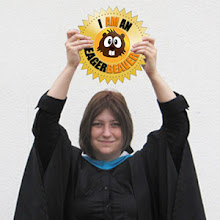Sunday 19 June 2011
June 2011 Newsletter out!
For all those that don't know, Animation Mentor's June Newsletter is out and the is some interesting stuff in there! To check it out for yourself click here - June 2011 newsletter
Labels:
Animation Mentor
Sketchbook added
You may of noticed this but I have added a new page, Sketchbook. This is actually another blog of mine that I will post my sketches on although any assignment sketches will also go on the main page. You won't only find sketches in there though, I will also post any sketched animations I make too. It should get busy in there soon so keep checking back to it to see my sketchbook grow :)
OH NO! It's Break Time!
Well, Animation Mentor is having a break before the next term begins so it means the student site is down until the 27th. I'm so glad that I will be distracted with helping to organise the Smelly Duck Rally otherwise those 8 more days will seem incredibly long and feel so wrong without Coffee Talks or Q&A's! I'm going to take my sketchbook to the rally too and hopefully get some pose sketches done, lots of funny and odd things happen at rallies so I will hopefully get some good unusual ones.
I am really excited about starting, I've been waiting for ages to get going. It's like a dream come true! I keep thinking about all the animation skills I'm going to learn and how I am going to learn from some amazing animators. I am looking forward to sharing my journey with you too and I hope I make it enjoyable and educational as well :) If you have any suggestions for my blog or want to ask me any questions then feel free to contact me anytime.
I am really excited about starting, I've been waiting for ages to get going. It's like a dream come true! I keep thinking about all the animation skills I'm going to learn and how I am going to learn from some amazing animators. I am looking forward to sharing my journey with you too and I hope I make it enjoyable and educational as well :) If you have any suggestions for my blog or want to ask me any questions then feel free to contact me anytime.
Labels:
Animation Mentor
Friday 17 June 2011
How to Train your Dragon
Anyone who knows me will know that I love the film 'How to Train your Dragon' and I love Toothless. He is so well animated and I love the little cat like mannerisms he has so when I came across the video below by Animation Mentor of them meeting some DreamWorks Animators to talk about it I got a little excited and couldn't believe I haven't seen it before! The is also a behind the scenes video below.
I love how they filmed themselves underwater to see how a dragon might move. Things like that is why I want to specalise in creatures as I can experiment and research how I think the creature would move or be challenged to make an animal believable so studying them intensly. It does sound hard but I'm not going to give up, it is my dream and if I work hard I will get there.
I love how they filmed themselves underwater to see how a dragon might move. Things like that is why I want to specalise in creatures as I can experiment and research how I think the creature would move or be challenged to make an animal believable so studying them intensly. It does sound hard but I'm not going to give up, it is my dream and if I work hard I will get there.
Labels:
Animation Companies,
Video's
Cool Adverts!
Here are some adverts that I have come across or Eager Beavers have shown me and I think are just amazing. Whether for their character animation, VFX or the idea. The are also some Making of videos in there.
Labels:
Video's
I won the Scavenger Hunt!
Woo hoo! I won the Scavenger Hunt along with Alyssa Lee. Alyssa and I have won an Animation Mentor t-shirt each so when it arrives I will take a picture of me in it to show you all. I can't wait!
Being brave, working hard and doing something that scares you is always worth it plus you may find you actually enjoy it! :D To get the courage to do stuff like the video I did, I just think Carpe Diem (Sieze the day).
Being brave, working hard and doing something that scares you is always worth it plus you may find you actually enjoy it! :D To get the courage to do stuff like the video I did, I just think Carpe Diem (Sieze the day).
Labels:
About Me,
Animation Mentor
1981 Disney Animation Special! - The Illusion of Life
Another great find! I just stumbled across this on YouTube while looking at stuff about the Fox and the Hound and it has some awesome behind the scenes footage, interviews and footage with Disney voice actors, tips and stories from Frank Thomas, Ollie Johnston, Eric Larson, Marc Davis, Milt Kahl, Ward Kimball and Wolfgang Reitherman. I love the quote "The only limit to animation, is your imagination". I personally found it really interesting and I hope you enjoy it as much as I did :)
Labels:
Animation Companies,
Video's
How to Succeed in Animation by Gene Deitch
 Here is something I came across thanks to another Eager Beaver. How to succeed in Animation It is an online book... that is a great read. It is by Gene Deitch and he made it to guide you to creative success; to make the most of every chance you get, and to give you some grisly tours of the desiccated remains of some of his own shot-down productions.
Here is something I came across thanks to another Eager Beaver. How to succeed in Animation It is an online book... that is a great read. It is by Gene Deitch and he made it to guide you to creative success; to make the most of every chance you get, and to give you some grisly tours of the desiccated remains of some of his own shot-down productions.So if you want to have a look go to www.awn.com/genedeitch and start readinga. Oh and the book contents are listed on the left :)
Thursday 16 June 2011
The Fox and the Hound
I watched The Fox and the Hound yesterday and it is one of my favourites. I watched it as a child and it is what made me love foxes! I even wanted a pet fox after watching it and used to look out my window at night hoping to see a fox that could be my very own Tod... I was young.
My favourite scenes have to be when Tod and Copper are playing hid and seak and the bear attack scene. They are both so wonderfully animated and emotional scenes.
Well, when it finished I was all excited about it again and decided to look up some stuff about it and find stuff from it so have a look below to see what I found, some really inspiring stuff :) Also look at the post above called '1981 Disney Animation Special! - The Illusion of Life' to see some behind the scenes of the making of the movie.
Facts about The Fox and the Hound
Click on an image to see a larger (original) version.

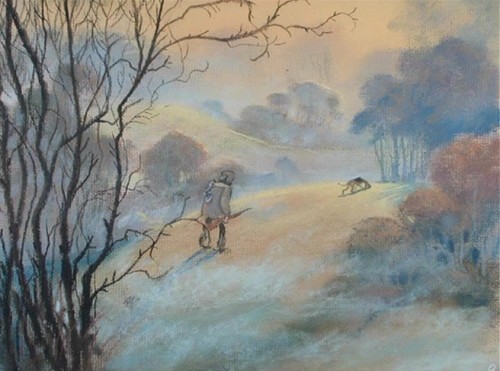












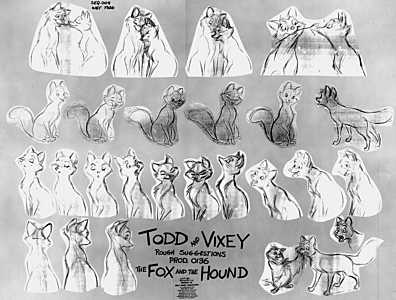












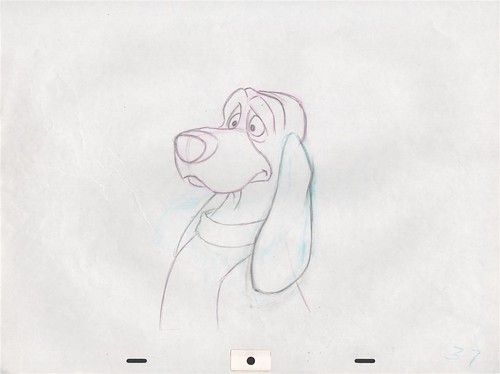
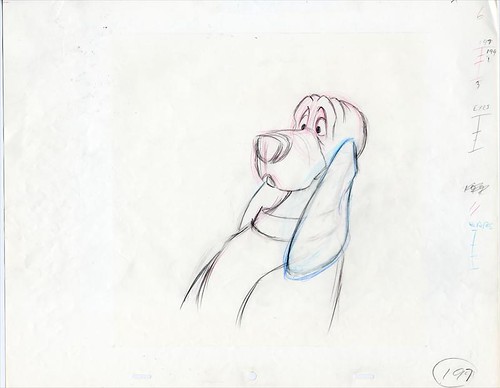
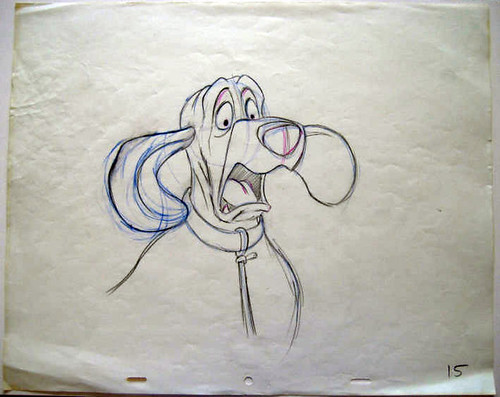













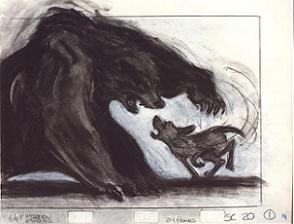

My favourite scenes have to be when Tod and Copper are playing hid and seak and the bear attack scene. They are both so wonderfully animated and emotional scenes.
Well, when it finished I was all excited about it again and decided to look up some stuff about it and find stuff from it so have a look below to see what I found, some really inspiring stuff :) Also look at the post above called '1981 Disney Animation Special! - The Illusion of Life' to see some behind the scenes of the making of the movie.
Facts about The Fox and the Hound
- It was made in 1981 and was re-released in 1988.
- It is based on the 1967 novel 'The Fox and the Hound' by Daniel P. Mannix.
- The 24th film in the Walt Disney Animated Classics series.
- It was the first animated film to use Dolby Sound.
- It was the last Disney film that Frank Thomas and Ollie Johnston worked on.
- Production was delayed when Don Bluth started his own studio and hired away animators.
- The fight sequence with the bear was originally going to be animated in charcoal!
- The co-director was used as a model for Amos Slade, the hunter.
- Approximately 360,000 drawings, 110,000 painted cels and 1,100 painted backgrounds were used to make the finished film.
- A total of 180 people, including 24 animators, worked on the film.
- It was the last Disney animated film to end with a “The End” card.
- Tim Burton was one of the animators on this movie and the Black Cauldron. Although his work was never used.
- In the original screenplay, Chief was slated to die the same as in the novel, but Art Stevens (one of the Producers) did not want to have an on-screen death and modified the film so that he survived.
Click on an image to see a larger (original) version.












































Labels:
Animation Companies,
Film Concept Art,
Video's
Monday 13 June 2011
The 12 Principles of Animation
 The best place to find out about them is in the book, The Illusion of Life: Disney Animation
The best place to find out about them is in the book, The Illusion of Life: Disney AnimationSquash and Stretch
This action gives the illusion of weight and volume as a character moves. The best example of this is with a ball.
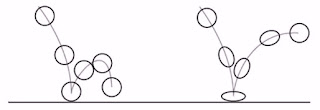
Anticipation
This movement prepares the viewer for major action that the character is about to do. You do it in real life. Think about how you jump. Do you just do it or do you bend your legs and swing your arms back in anticipation for the jump?
Staging
This is where you use props, characters and camera angles to help tell the story, direct the eye and create a feeling for the scene. For example, here Woody and Jessie are either side of Buzz creating a triangle that points down to Buzz as he is the main focus of this scene but the triangle falls towards Woody creating an uncomfortable space to show Woody’s feeling at this moment.

Straight-ahead and Pose-to-Pose animation
Straight ahead is used for actions where spontaneity is important. Pose to Pose animation you plan out your animation using poses. The best way to do this is by drawing thumbnails to work out your scene.
Follow through and overlapping action
When an object or character comes to a stand still you get a follow through and overlapping action. For example if a character stops running their hair will go slightly go further than the character.
Slow-out and Slow-in
This softens the action. Making it more lifelike. A good way of doing this is by making sure no movement is totally linear in the graph editor, that way you will avoid a robotic look.
 Arcs
ArcsMost actions follow an arc or circular pattern rather than being constrained to one axis. Arcs make actions more natural action and helps disguise inbetweening that 3D software makes.
Secondary Action
This is to add more believability. It basically reinforces the main action. An example of this is when a cat is walking it might be swaying its tail or twitching its ear. If you look at a real cat it won’t just be walking it will be doing other stuff with its body too.
Timing
An important piece as if timing is wrong the whole thing will look wrong. To get better at this, watch reference footage and repeatedly playblast and watch your animation to make sure your getting it right. Also, get views from other people, they may spot a flaw in the timing that you may not.
Exaggeration
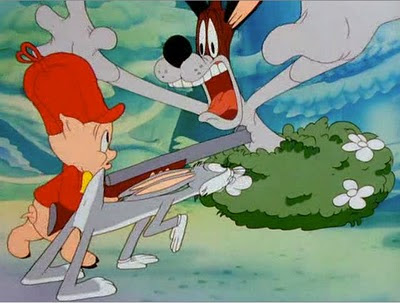 One of my favourite as I grew up around cartoons such as Tom & Jerry and the Looney Tunes, where they sometimes really exaggerate their characters actions. Sometimes exaggeration is necessary though but not always and you shouldn’t really over exaggerate as things can get silly… well unless that's what your after ;)
One of my favourite as I grew up around cartoons such as Tom & Jerry and the Looney Tunes, where they sometimes really exaggerate their characters actions. Sometimes exaggeration is necessary though but not always and you shouldn’t really over exaggerate as things can get silly… well unless that's what your after ;)Solid Drawing
Are interesting with well-proportioned shapes and a good sense of weight and volume. Apply these characteristics to 3D models and poses.
Appeal
This is the visual quality that makes a character or object attractive, interesting or inspiring. Don’t just think cute or beautiful though, this can be applied to monsters and villains.
The best website I can recommend for finding out more about the 12 principles is the website for the guys who came up with it! Frank and Ollie so check out this link - www.frankanollie.com/PhysicalAnimation.html
Labels:
12 Principles of Animation,
Images,
Links,
Tip Jar

